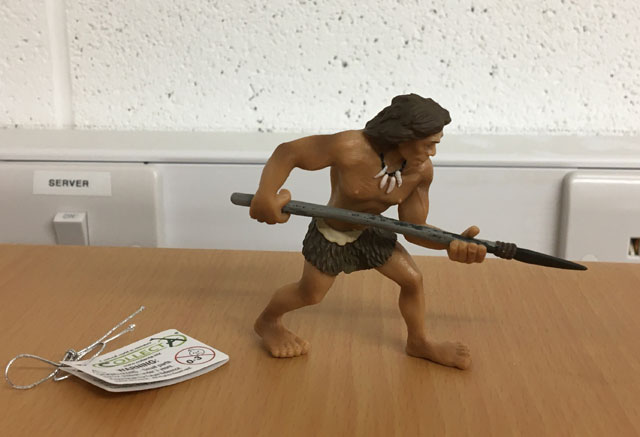Shedding Light on our Closest Relative – The Amazing Neanderthal In All of Us
The Neanderthal Genome Shedding Light on Human Evolution
A ten year project led by an international team of anthropologists and geneticists is shedding light on the H. sapiens and H. neanderthalensis relationship as more information about the Neanderthal genome, the genetic make up of this extinct species of human is revealed.
Scientists involved in the project say the findings, published today in the journal “Science”, provide important information on the origin of our own species and the inter-relationships with the other hominid species with whom modern humans shared the world up to around 28,000 years ago – the Neanderthal.
Although earlier studies had cast doubt over whether modern humans interbred with Neanderthals, this study indicates that modern humans migrating out of Africa did interbreed with Neanderthals. This interbreeding could be one of the reasons why the Neanderthal is no longer with us (unless we count this DNA evidence that is), the Neanderthal could simply have been absorbed into the modern human genome.
The lead researcher, Svante Paabo of the Max Planck Institute for Evolutionary Anthropology, in Leipzig, Germany commentated:
“Having a first version of the Neanderthal genome fulfils a long-standing dream. For the first time we can now identify genetic features that set us apart from all other organisms, including our closest evolutionary relative.”
Neanderthal
The findings are based on bone samples of three female Neanderthals excavated from Croatia’s Vindija Cave, a site famous for its well preserved Neanderthal remains and artefacts. The fossilised bones of the individuals have been estimated by scientists to be approximately 38,000 years old. It is at around this time that Neanderthal remains and artefacts start to disappear from the fossil and archaeological record of Europe, with evidence of modern humans becoming far more common.
A Model of a Neanderthal Man
Picture credit: Everything Dinosaur
The picture shows a model of a Neanderthal man, to see this model range: CollectA Age of Dinosaurs Popular Range.
The scientists state that they have mapped sixty percent of the genome so far. They will continue their efforts to complete the sequence, to map the entire genetic code of the Neanderthal species, a project that they anticipate will take years.
The researchers compared the Neanderthal genetic material, with the genomes of five present-day humans from different regions of the world: China, France, Papua New Guinea and southern and western Africa.
Human Migration
The findings suggest that modern humans, after migrating out of Africa 80,000 to 45,000 years ago, bred with Neanderthals then in the Middle East before spreading further into Asia. In the scientific paper, the team conclude that between 1 to 4 percent of the modern human genetic make up of non-Africans can be traced back to a Neanderthal ancestor.
Over recent years, our understanding of Neanderthal stone tool technology and Neanderthal culture has changed and the slow witted, ape man image associated with Neanderthals in the past has been fully refuted.
To read an article about Anglo/American research into Neanderthal tool technology: Neanderthals not as Stupid as We Thought.
David Reich, a geneticist and associate professor at the Harvard Medical School Department of Genetics, commented on the paper stating:
“The main finding is that there was gene flow from Neanderthals into the ancestors of modern non-Africans.”
Neanderthals first appeared in the European fossil record about 400,000 years ago. The species persisted until approximately 28,000 years ago when the last Neanderthal enclaves (in the Iberian peninsula) died out.
Extracting DNA from the ancient bone samples was a daunting feat. Using a delicate dental drill, researchers collected tiny fragments of bone powder (500 milligrammes), roughly the size of a small asprin, from which to analyse and isolate Neanderthal DNA.
Svante Paabo stated:
“Six or seven years ago, I thought it would be impossible, at least my lifetime, to sequence the entire nuclear genome of Neanderthals.”
The bone samples contained very little preserved Neanderthal DNA. According to researchers, 95 to 97 percent of the DNA extracted was bacterial or from other organisms that had colonised the bone. The DNA fragments that were recovered were extremely small and contained chemical modifications that could have yielded false data.
Researchers also had to take special measures to extract the Neanderthal DNA without contaminating it with their own human DNA. Employing new computer technologies and software the team were able to map out the majority of the 4 billion-nucleotide Neanderthal genome.
Scientists are hoping that over the next few years more of the Neanderthal genome will be plotted.
To view the extensive range of prehistoric animal themed gifts and toys available from the award-winning Everything Dinosaur website: Visit Everything Dinosaur.


